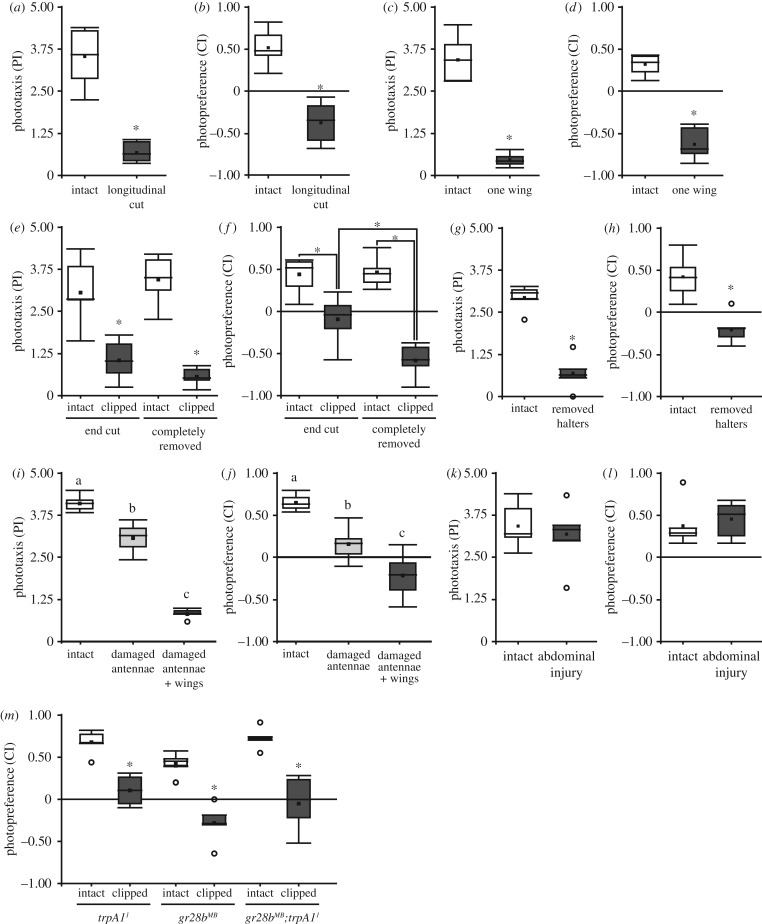Figure 4.
Only flight-affecting manipulations affect photopreference. (a,c,e,g,i,k) BCP PI from WTB flies with and without different injuries. (b,d,f,h,j,l) T-maze CI from WTB flies with and without different injuries. (a,b) Longitudinal cut of the wings. n = 7, (a) p < 0.001, (b) p < 0.001. (c,d) Only one wing cut. n = 7, (c) p < 0.001, (d) p < 0.001. (e,f) Wing clipped at different lengths. Randomized block design ANOVA; n = 6; (e) Block p = 0.094, Interaction wings integrity (intact or clipped) versus degree of injury (completely removed wings or end of the wings cut): p = 0.087, wings integrity: p < 0.001, degree of injury: p = 0.797; (f) block p = 0.238, interaction wings Integrity versus degree of injury: p = 0.007, simple effects: end cut versus intact: p < 0.001, completely removed versus intact: p < 0.001, end cut versus completely removed: p < 0.001, intact (control from end cut) versus intact (control from completely removed wings): p = 0.865. (g,h), Both halteres removed. (g) n = 5, p < 0.001, (h) n = 7, p < 0.001. (i,j), Both antennae damaged, and both antenna damaged and wings clipped (damaged antennae + wings) (i) n = 5, ANOVA p < 0.001,Tukey's post hoc test (p < 0.05; least-significant difference = 0.54), (j) n = 6, ANOVA p < 0.001, Tukey's post hoc test (p < 0.05; least-significant difference = 0.29). Same letter indicates no significant differences. (k,l) Abdominal wound. (k) n = 6, p = 0.377, (l) n = 6, p = 0.552. (a,b,c,d,g,h,k,l) Paired t-test. (m) Thermal sensory deprivation. n = 5, t-test, trpA11 p < 0.001, gr28bMB p < 0.001, gr28bMB;trpA11 p = 0.001. See figure 1 for detailed graph information.

